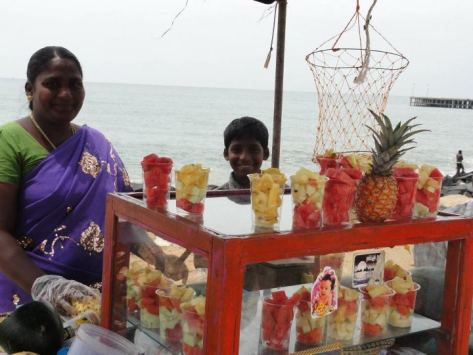Poverty is a primary determinant of poor health for both men and women. It has a particular impact on women’s health. 2out of 3 women around the world presently suffers from anemia, malnutrition,severe fatigue, increased probability of infections and premature death. Poverty and poor nutrition results in high level of anemia in pregnant women, unattended deliveries often in unhygienic conditions lead towards infections and complications. Poor women face unavailability of affordable health care post delivery, to ensure that she and the child pull through the first few hours and days.
The absence of safe drinking water and sanitation facilities have a direct bad impact on them, specially in the case of pregnant women. Women are more prone to cervical and breast cancer. One women dies every 8 minutes due to complications arising due to pregnancy such as Sepsis, hemorrhage and obstructed labor. These deaths could be avoided if there is timely medical intervention.With advances in Science and medical care HIV infected mothers have an option to keep the child in their womb unaffected. But it is not possible for poor mothers suffering from HIV due to high cost.
Women’s gynecological and urological organs share a close relationship anatomically and physiologically. Any disorder affecting one of this may give rise to symptoms in the other, complicating the diagnosis.. The pelvic floor or lower region of the pelvic area is made up of tissues, muscles and bones. These 3 keep the urinary organs in place. Pregnancy and child birth stretches these to maximum and improper care during this crucial period may result in loosening of the natural support and prolapse of the organ fitted just above. Uncontrollable loss of urine or feces, sexual dysfunction, descents of uterus and protrusion of the bladder and rectum are some of the manifestations of urogynecological ailments.
A pan India survey conducted recently by a Bangalore based institution for social and economic change establishes the fact that women from the lower economic strata are more vulnerable to premature menopause than their more priviliged counterparts.
The physical, emotional and mental stress on Indian women due to changing dynamics of Indian family coupled with lack of proper nutrition and education play havoc with female hormones, resulting in a skewed menstrual pattern. Mood swings, decreased libido, osteoporosis are also caused by this hormone dip.
For the poor the choice is between health care in private systems [that are beyond their reach] or death. Women disproportionately suffer from mental health disorders and are more frequently subject to social causes that lead to mental illness and psycho social distress. The origin of it can be traced to the social circumstances of many women’s lives. Depression, hopelessness, exhaustion, anger, and fear grow out of hunger, overwork, domestic and civil violence, entrapment and economic dependance.
According to UNESCO’s report on Kenya and some other developing and undeveloped countries where the poverty ratio is quite high, poor women and girls use cotton or woolen clothes including socks, tissue paper,pages torn from the notebooks, pieces of sponge from mattresses during menstrual periods as pads are not available everywhere. The reason is low sales of pads as the price is very high. It cannot be afforded by lower economic strata women. 70 % women don’t use sanitary napkins in such cases.

They prefer the money to be invested on food for their family instead of their sanitary health. But nowadays, by the efforts of governments, NGO’s, Social welfare or health campaign programs, women activist organizations.
en.wikipedia.org/wiki/poverty
www.un.org/womenwalch/daw/ww/mental.htm
www.ncbi.nlm.nin.gov/pmc/articles/pmc
